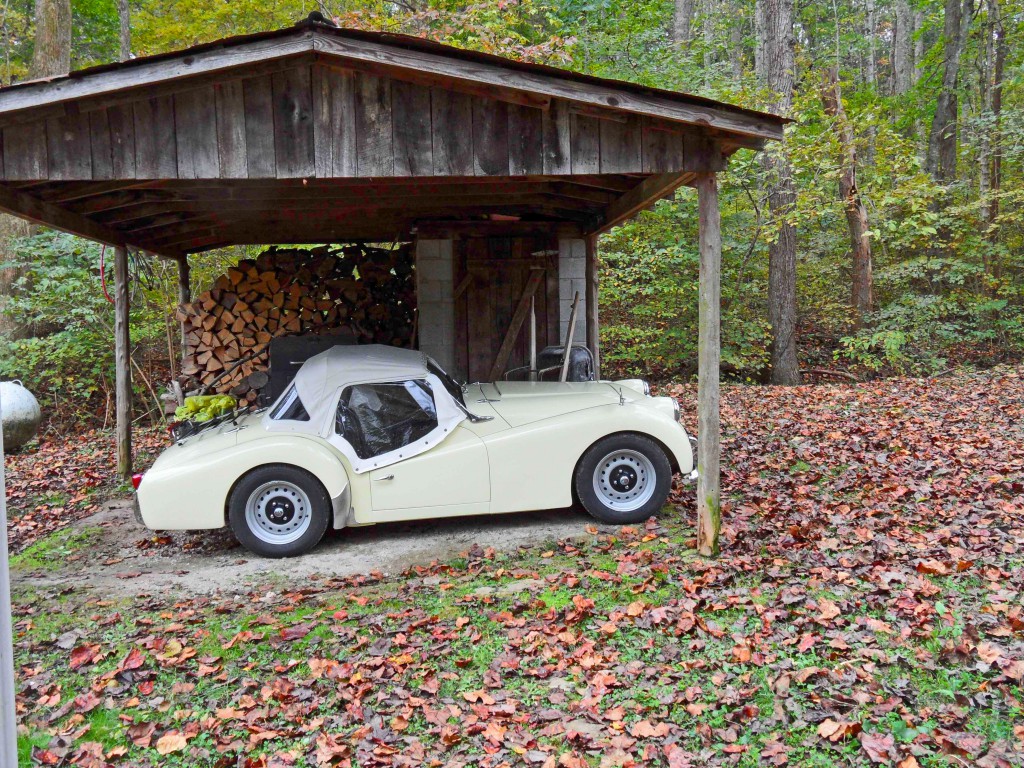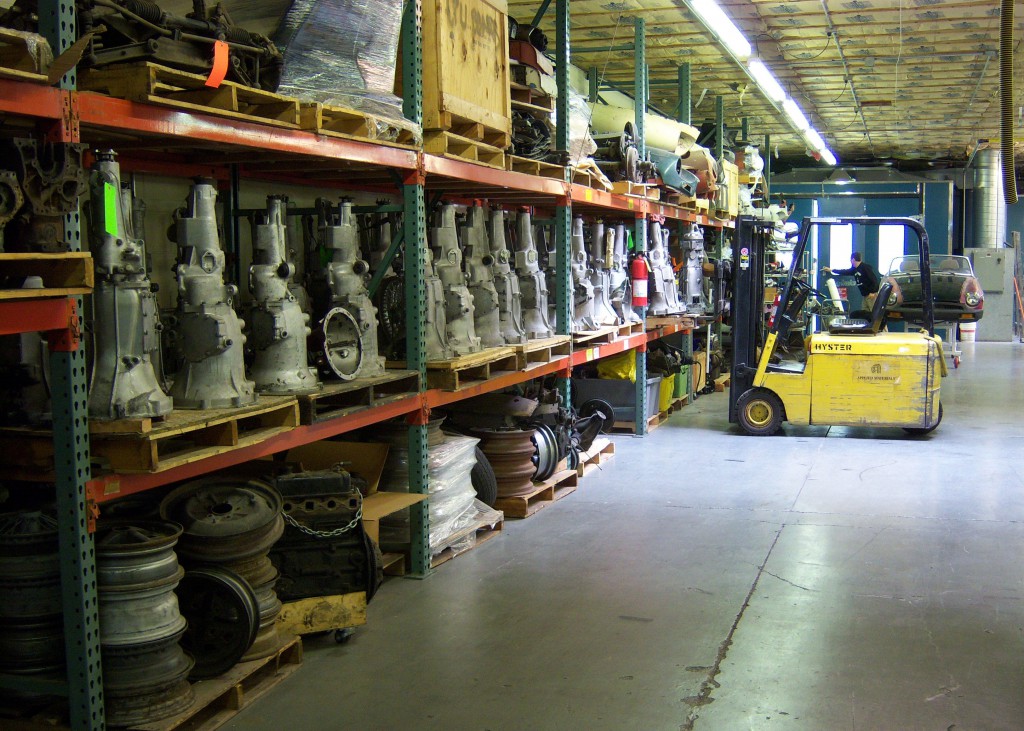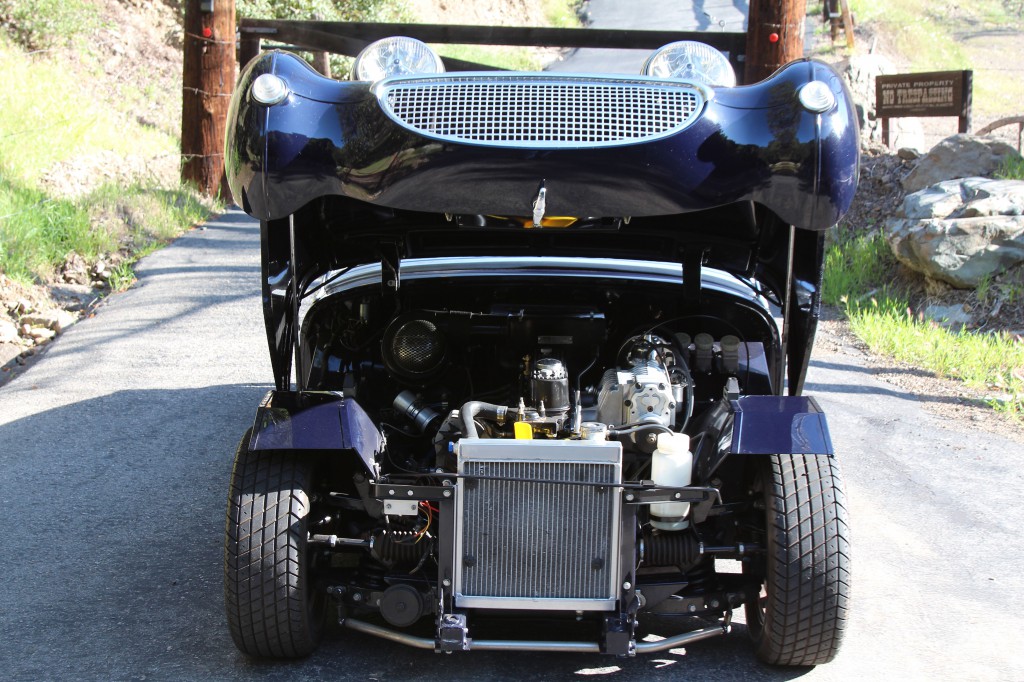There are two roads out of Wendover, Utah, that lead to the Bonneville Salt Flats. One is interstate 80, and there is a sign on the road which says “Exit 4 Bonneville Speedway.” The other road is a strip of bituminous that was part of US 40 and the old Lincoln Highway. Today, it serves as a frontage road to a large potash extraction firm.
62 years ago, an MG Special was towed down this road from a service station in Wendover, where the car was stored and prepared. The car was the MG EX 135. The driver was Goldie Gardner. After checking into our hotel room in West Wendover on the Nevada side of the border, I chose to drive this short stretch of old road to the flats. I wanted to get a better sense of what it must have been like in 1952, when the EX 135 was towed to the salt.
That experimental car, built on a MG K3 Magnette chassis, was the first land speed racing MG to ever turn a wheel on the salt. With the support of the factory, and the installation of a XPAG engine to demonstrate to the American consumer the potential of MG sports cars, the expertly prepared EX 135 would take the flying 5-mile record of 189.506 mph. Not bad for a hot-rodded MG TD engine in a pre-war chassis.
So here I was, with my wife Kate and her nephew Nick Martin, towing my stock bodied MG Midget down this very stretch of road. Under the hood was an engine design that pre-dates the world conquering small block Chevy, a BMC 1275 destroked to 999cc, tuned to 95.1 hp at 8,000 rpm, ready to do battle.
I was looking for some MG mojo. Goldie Gardner, George Eyston, Phil Hill, Stirling Moss—all had passed through this corridor to get to one of the strangest and most unforgiving landscapes on earth. Morris Garages and Austin-Healey held dozens of international records here in the 1950s—many still stand. And while this little detour was acknowledging MG’s past, my quest is not one of nostalgia. My Midget runs in the Grand Touring class, and anybody willing to take a Miata, or a S2000, or Mercedes 300 SL Gullwing, or a Lotus Elise, and bring it into class compliance is welcome to run.
Bonneville is not vintage racing. This is timed trials. It’s you against the clock. The salt doesn’t care whether your car was created through CAD programs or chalked out on the floor of a barn. At Bonneville, what’s relevant is what shows up. What’s relevant is the time slip.
We arrived late on Saturday and set up our pit area. This would be the only time we would have to really take a look at some of the other cars and for Kate and me to catch up with some friends.
On Sunday, Nick and I elected to get rookie orientation done before we teched the car. Normally, this takes about an hour, but part of the orientation is observing other drivers and their procedures at the starting line. As is often the case at Bonneville, the breeze picked up, and racing was temporarily halted. By a quarter to one, the event resumed, I grabbed a “rookie” sticker and attached it to my helmet.
We pulled the Midget into the tech area and were gratified to find “Kiwi Steve,” a tech inspector with whom I traded numerous e-mails during the past several years. From those conversations, Steve had a very good idea what he was about to see. Toward the end of a very thorough inspection, I was told to get my suit on and prepare for bail out. This is not so much a timed test as it is a reassurance to the tech inspectors that you have a plan of escape in the event that something unfortunate should happen.
This was also the event that so many of my friends on the salt had been gathering to witness.
 It’s no secret that the MG Midget is dwarfed by a modern MINI. It’s also no secret that I am 6’5″ in my stocking feet. Gathered around were easily a dozen onlookers, cameras in hand, waiting to see something akin to a Ringling Brothers routine—a cross between an illusionist’s lady-in-the-box trick and a clown car gag.
It’s no secret that the MG Midget is dwarfed by a modern MINI. It’s also no secret that I am 6’5″ in my stocking feet. Gathered around were easily a dozen onlookers, cameras in hand, waiting to see something akin to a Ringling Brothers routine—a cross between an illusionist’s lady-in-the-box trick and a clown car gag.
Strapped in with a 5-point harness, removable steering wheel secured, helmet and HANS device in place, safety net up, window latches secured and door closed, Steve yelled, in an accent that only a New Zealand expatriate could muster, “YOU’RE ON FAAAAR!”
I feigned turning off the fuel and ignition, pantomimed pulling the cables on the fire suppression system, unlatched the steering wheel, tossing it to the passenger side, unlatched the seat belt, dropped the safety net, pulled the cable to the window latches, threw the door open, and flopped out of the car like a Raggedy Ann doll—to a round of laughter and applause. Kate came up to me afterwards and said, “That was funny.”
It probably did look funny, but we passed tech.
We pulled the car around to track #4—the short rookie track intended for slower cars and limited testing. Once again the wind had picked up and the tracks closed down. It became clear that even if the line started moving again, I wasn’t going to get a run in that day. The event was officially called at 6:00, and we left the car in line. Despite being the fastest sport on earth, sometimes, it’s the slowest.
Monday morning was cool, sunny and still when Nathan the instructor came up to me. Without a prompt, I said, “I’ll be taching it to 6200 rpm which should be 100 mph, and pulling out at the 1-mile marker.” Nathan appreciates it when you pay attention in class.
I was pleased with the outcome. While the engine is quite peaky and barely idles below 3,000 rpm, I was able to get the car launched, and wound it up through the gears, shifting at about 8500 in first and second. The rebuilt transmission shifted smoothly, and near as I could tell, there were no scary noises to be detected over the chainsaw-like roar of the short-stroke 5-port. At the 1-mile marker, I was running smoothly at 6200 rpm—giving me a speed of 102.464—a little over what I thought, but not so far off to require a re-test. We returned to the start line with the time slip, showed it to Nate, and was informed I could pull my rookie sticker from the helmet.
I was ready to compete but the wind had picked up again. Hurry up and wait.


 In 90-degree heat on a reflective pan of white and a stiff breeze wicking your sweat, dehydration can hit you before you even realize it. Nick, who used to captain the Trek mountain bike team, made it abundantly clear—“If you feel thirsty, it’s probably too late.” And when you’re about to climb into an enclosed car the size of a Weber grill in a quilted fire suit, keeping one’s physical body in equilibrium is paramount. Every time I turned around either he or Kate were shoving a bottle of water at me.
In 90-degree heat on a reflective pan of white and a stiff breeze wicking your sweat, dehydration can hit you before you even realize it. Nick, who used to captain the Trek mountain bike team, made it abundantly clear—“If you feel thirsty, it’s probably too late.” And when you’re about to climb into an enclosed car the size of a Weber grill in a quilted fire suit, keeping one’s physical body in equilibrium is paramount. Every time I turned around either he or Kate were shoving a bottle of water at me.
By 1:30 the line started moving. About four cars back from the starting line, I suited up. Nick helped me in the car, checked my belts, pulled up the net, clamped the windows into place, and gave the top two solid hits. I fired it up two car lengths back, getting the BMC 5-port up to temp, and rather enjoying the incredible racket this car is able to produce. Even seasoned salt flats veterans were covering their ears.
At 2:28 in the afternoon, I passed between the 2 and the 3-mile markers at 115.886 MPH. No stress, no issues.
Nick and Kate met me on the return road—for safety reasons, you are required to tow vehicles back to the starting line. We stopped at the timing booth to pick up the slip. I was less than 6 miles per hour off of the class record of 121.779 mph, and I hadn’t even learned to properly drive the car yet. We pulled back around and got into line again.
5:08 pm—with a little more confidence and a cleaner shift technique, we pushed it to 116.698.
By this time, many cars were in impound. Folks were getting hungry and calling it quits for the day, and I felt a bit worn, but Nick insisted on one more pass before they closed down the track. “We’re here to race,” he said. “Get your suit on.”
I wasn’t expecting anything other than a practice run. The ambient temperature remained at a stubborn 90 degrees, and as the heat persists during the day, water from beneath the surface tends to percolate up through the salt, making the track soft. The adjusted altitude reading, which takes into account air density and temperature, was 7145 feet—we dynoed the engine at 680 feet—so I was likely down 10 horsepower or more.
Nobody was more surprised than me when I read 118.069 mph. Tomorrow morning, I knew the air density would be more favorable to the little motor, so we packed it in for the day, grabbed tacos and went to our hotel with high expectations—and in dire need of hot showers.
Why We Race
The first cars to run in the morning are the cars that exceeded class records the day before. These cars are impounded and the next day are permitted two hours of prep time and are paraded to the starting line under the watchful eyes of the officials. No other racing will occur until those in impound have had their opportunity to back up their runs from the day before. When a backup run is made, the two numbers are averaged, and if that average is in excess of the standing record, subject to class specific certification, you have an SCTA-BNI record.
Communications between the officials is handled through CB radio, and there is a low wattage broadcast provided for spectators. While waiting in line, there was a bit of buzz about an accident on course one—one of the two long courses for cars faster than 175 mph. I was consumed with getting the Midget ready, so I didn’t pay a lot of attention—most accidents on the salt are quickly and readily handled by the safety crews.
I suspect Nick knew who was involved—a friend of mine, Bob Steele—but if he did, he didn’t let me in on the details. Bob’s car was destroyed, and while he made a complete recovery from the bumps and bruises, if I had known, I likely would have had a tough time driving that day. Having managed a race team before, Nick knows about “head space” and the effects personal distractions can have on a competitor’s performance. Nick kept me to task, and I’m pretty certain that’s how Bob would have done it, too. I may have removed my “rookie” sticker, and despite my performance with the Midget on Monday, I’m not a true competitor yet.
The conditions were ideal for a swift drive. The temperature was 71 degrees, the coolest temp I would see all week, and the wind was tacking at one mph—virtually inconsequential.
After short-shifting into 4th, the time slip showed a disappointing 115.878.
Now this is when I realized that, yes, a record would be really nice, but above everything else we’re out here to have fun. We laughed it off, and more importantly, I was finally getting familiar with the car.
As altitude goes up, a carbureted engine tends to run richer. Mark Balinski had helped me immeasurably with tuning and sent along a series of progressively leaner jets to try. SU carbs are somewhat self-adjusting, but Weber DCOEs require precisely machined jets and emulsion tubes to match the engine and conditions. Mark says, “You want to be running lean up until just before the point that things might get melty.” Call me chicken, but I only went one jet size smaller. The next run we were back on our game: 117.293 mph.
Thinking that if less is good, lesser is better, we checked the plugs again, and swapped out the jets to the next smaller size. Our efforts were rewarded with the best time so far: 118.257.
I had allotted one more day to run, leaving a wiggle day for back up, if I were to be that fortunate. We agreed we’d give it two more shots on Wednesday.
Last Chances
Wednesday morning was cool, dry and absolutely zero wind. We grabbed a 117.816, but it was becoming clear that the heavier air was having less impact on our power output, and seemed to be working to our disadvantage with more air resistance.
It was just past noon, and we decided we were going all in. I changed out the jets to the smallest set we had, and Nick located a compressor. We took the tires up to 50 psi, and went for broke.
118.693…yep, 3.086 mph short.
But that’s fine—it gave me something to do over the winter. There’s likely a bit more power to be had from this engine. While I can’t modify the body—the class requires a stock body—I can get it dropped a little lower to the ground for a smaller frontal area. There are parasitic losses in the drivetrain that can be minimized by utilizing a crank scraper and windage tray, using an electric water pump, going with a lighter oil in the transmission and differential. There is still speed to be had.
The car that currently owns the record is an Abarth Bialbero. While I was in line, a gentleman with an English accent came up to me and said, “I/GT, eh? Do you know what car holds that record?” I informed him that indeed, I did, and he replied, “That’s right…and I own it!”
Without missing a beat, I said to him, “I have a picture of your car on my dart board in my basement.”
As it turns out, my new friend from England, Martin McGlone, also races a Sebring Sprite in Europe—one originally driven by Stirling Moss. Martin wasn’t there out of nostalgia. He was piloting a 1966 Shelby GT350, and looking for a class record against cars much more technologically advanced.
I talk to dozens of people who invariably say, “I’d like to go to Bonneville someday.” I had said it for years until I finally made my mind up and went. But until one attends, until one starts talking with these competitors on the salt, you cannot grasp the sense of community Speedweek provides. There is magic here, born of history, sweat, and a defiance of those who say: “It can’t be done.” There is a reverence for the past that runs parallel to the advance of technology, but it never trumps the goal of going faster.
I’ll be back in August—there are 3.086 mph sitting on the table. I can’t get ’em if I don’t show up.
Story by Chris Conrad
Photos by Kate Martin











'Two Roads Out of Wendover' have 2 comments
August 19, 2014 @ 1:15 pm Chris Conrad
A quick update.
Bonneville Speedweek was completely rained out this year. Fortunately, there are two more events this year to get the Midget into the record book.
I’ll be attending the World of Speed event with the Midget, September 6-9, 2014.
Hoping the weather holds, and the salt dries out.
See you on the salt!
Chris Conrad
August 6, 2019 @ 5:48 am Ken cook
Your storey has reignited the bonneville bug again.l ran a 1953 ford pickup in xfmp #853 for several years had 2 records since broken.for some unknown reason I just purchased a 76 mgb in pretty nice shape and been starring at it sitting in my garage and seeing it on the salt.Anyway any encouragement and advice would be appreciated as I’m ready to go back.look forward to hearing from you .